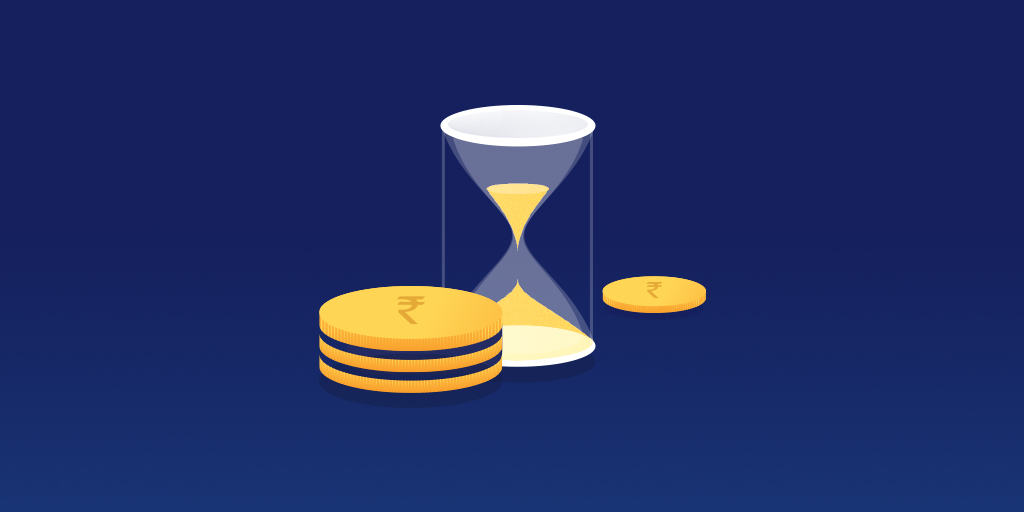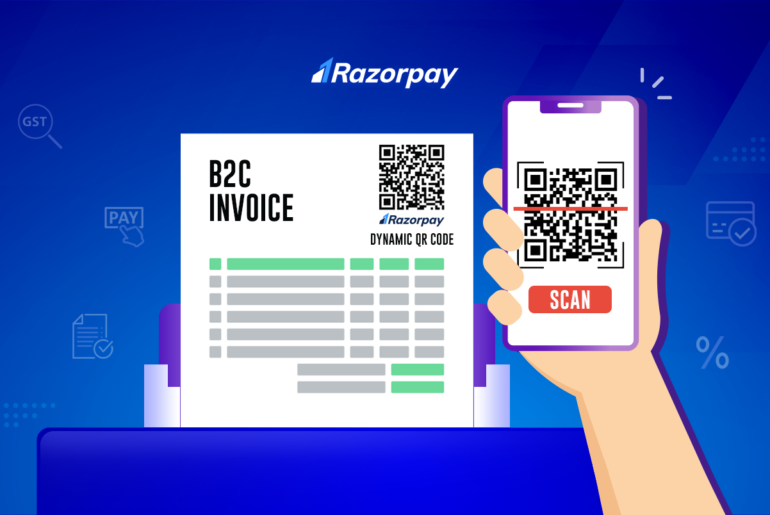India is clearly on the path to become a less-cash economy with the introduction of several new digital payment solutions like UPI and AEPS . Adding to this arsenal of fintech solutions is BharatQR that was launched on February 20, 2017.
BharatQR is an infrastructure light, interoperable digital payment solution that aims at enabling easy, quick and secure payments at merchant locations or physical stores.
BharatQR essentially stems from QR code (Quick Reference code), a machine readable optical label that can store information; something similar to a barcode, but with the ability to store larger amounts of data, anything from URLs to product information to payment information.
QR codes follow a specific format (black squares in a square grid with a white background) and the interesting thing about them is that they are easily readable by a simple smartphone camera, making the solution accessible to everyone. And, given how convenient and accessible the solution is, it is applicable for a large number of use-cases from running retail offers, to providing payment solutions, to pushing app installs.
BharatQR is a solution that provides a single universal QR system that can leveraged for digital payments across several areas like retail stores, petrol pumps, restaurants, schools etc.
The solution was developed by NPCI in collaboration with MasterCard, Visa, Amex and Rupay to provide an interoperable, open loop system solution where a customer can pay through any bank or card network to the merchant’s bank account by simply leveraging an app. The transfer of money to the merchant is also immediate since it leverages the IMPS payment infrastructure.
Here is sample QR code:

Typically digital transactions via debit or credit cards at physical locations were only possible through POS or card-swipe machines, BharatQR now completely removes the need for such hardware, completing transactions just through a simple app installed on customers’ smartphones’. As for the customer, once the bank app is installed, he/she need not even carry the physical card in order to make the payment.
What Is Bharat QR Code?
Bharat QR code is a standardized QR code-based payment system introduced by NPCI in India. It enables interoperable payments and consolidates multiple payment methods into a single code. Customers scan the code using their mobile apps to make payments via UPI, cards, or wallets. Bharat QR code promotes digital payments and offers a convenient, secure, and widely accepted payment solution in various merchant establishments.
How to Use a Bharat QR Code?
To use a Bharat QR code for payment:
- Open a payment app supporting Bharat QR.
- Scan the merchant’s QR code using the app.
- Choose a payment method (UPI, cards, wallets).
- Enter the transaction amount.
- Authenticate the payment.
- Receive confirmation of the transaction.
What are the Benefits of Bharat QR Code?
The benefits of Bharat QR code include:
- Convenience: Easy and cashless payments using a mobile device.
- Interoperability: Works across multiple payment networks and banks.
- Multiple payment options: Supports UPI, cards, and wallets.
- Enhanced security: Reduces the risk of exposing sensitive card details.
- Wide acceptance: Accepted by numerous merchants in India.
- Promotes digital payments: Contributes to the growth of cashless transactions and financial inclusion.
How to Generate Bharat QR Code?
To generate a Bharat QR code:
- Choose a payment app.
- Access the QR code generation feature.
- Enter transaction details.
- Generate the QR code.
- Display and share the QR code for payments.
How to Make Payments with Bharat QR Code?
To make payments with a Bharat QR code:
- Open a payment app.
- Scan the QR code.
- Choose a payment method.
- Enter the transaction amount.
- Authenticate and confirm the payment.
- Receive transaction confirmation.
Functioning of BharatQR
BharatQR is a very simple payment system that requires minimum effort from both merchants and consumers.
In order to start accepting payments via BharatQR, merchants have to request for a BharatQR decal from the bank and activate the business account by submitting all the documents to the bank. Once this is completed, the QR decal can be displayed at the store for customers to pay via BharatQR.
The solution leverages the IMPS payment infrastructure and once the customer has authorised the transaction, the merchant immediately receives the money in his bank account. Any business formally registered as any of the following business types is eligible to apply for Bharat QR:
- Sole Proprietorship
- Partnerships/Limited Liability Partnership
- Private Limited Company
- Co-operative Society/Subsidiaries and Associations/Trust/Club
- Religious Organisation/Educational Institute/Government Body
- Public Sector Undertakings
- Insurance/Mutual Fund
- Non-Government Organisation (NGO/Charitable Trust)
As for customers, the first step is to download any bank app that supports BharatQR (currently available with 15 partner banks with more to come in the future) and link their bank account to the app. Once this is complete, customers can pay via BharatQR code at merchant locations by simply scanning the QR code through the bank app (via the scan QR code option) and entering the purchase amount and OTP in order to authorise and complete the payment.
Steps to pay using BharatQR:

QR codes are not new to the Indian payments landscape. Prepaid digital wallets and card networks like Visa (through mVisa) and MasterCard (through Masterpass QR) have enabled payments through QR codes in the past.
Even UPI includes a standard QR specification of its own. However, the major roadblock to these solutions is that they are not interoperable; meaning transactions have to occur inside specific card networks or prepaid wallets. The major areas of difference between existing QR code payment solutions and BharatQR are as follows:
| Wallet QR code | Card network QR code (like mVISA and Masterpass QR) | BharatQR | |
|---|---|---|---|
| Interoperability | Closed loop and works only within the card network. Hence, not interoperable. | Closed loop and works only within card network. Hence, not interoperable across all card networks. | Open loop and interoperable across all banks and card networks. Will also support UPI and AEPS in the future. |
| Limit of transaction/transfer amount | Upper limit on spend amount as mandated by RBI. | No upper limit on transaction value or volume. | No upper limit on the transaction value. |
| Transfer of money to bank account | Money is transferred to the merchant’s wallet and not the bank account. There is both an upper limit as well as a charge levied for transfers made to the back account. | Provided by the card network and directly links to the bank account, hence removes the need to make additional transfers. | Directly transferred to the merchant’s bank account, eliminating the hassle of money transfer |
BharatQR brings a common interface for payments via QR code. No longer do customers have to use QR code solutions from different providers at the same merchant in order to make payments. Customers can simply transact via a single app that is directly linked to the bank account instead of using multiple prepaid digital wallets, something that was commonly used for in-store digital transactions before BharatQR.
According to RBI, 24.5 million credit cards and 661.8 million debit cards were being used in the country in March 2016 but only 700,000 merchants could accept card payments, due to lack of payment infrastructure. BharatQR code is a great step in overcoming this impediment, making offline digital payments easier than ever before.
At Razorpay, we are BharatQR ready and are actively looking at integrating this feature into the Razorpay ePOS app to start with.
Conclusion
Bharat QR ensures secure and streamlined payments, enabling customers to make convenient and contactless transactions using their mobile devices. It promotes interoperability by supporting multiple payment methods, reducing the reliance on physical cash and cards.
Frequently Asked Questions
Is Bharat QR safe?
Bharat QR is considered safe for digital payments due to encryption, tokenization, authentication, secure payment networks, and security measures implemented by payment apps. Users should follow best practices for added security.
How can I get my Bharat QR Code?
To get your Bharat QR code:
- Choose a payment app.
- Sign up or log in.
- Find the QR code generation option.
- Enter required details.
- Generate your QR code.
- Access and share the code.
Is BharatQR different from UPI?
Bharat QR is a QR code-based payment system that encompasses multiple payment methods, including UPI, while UPI is a specific payment system that facilitates direct bank transfers through mobile devices.
Does Bharat QR have charges?
For a business, the charges for Bharat QR transactions vary and typically include a Merchant Discount Rate (MDR) and transaction fees. It is advised to check with your payment app or bank for specific details on applicable charges.
What is the payment limit for Bharat QR?
The current transaction limit is set to 1 Lac per transaction. However, a lower per day transaction limit may be set at the bank’s end.
Always stay on top of the latest news in the payments industry. Subscribe to our blog below



